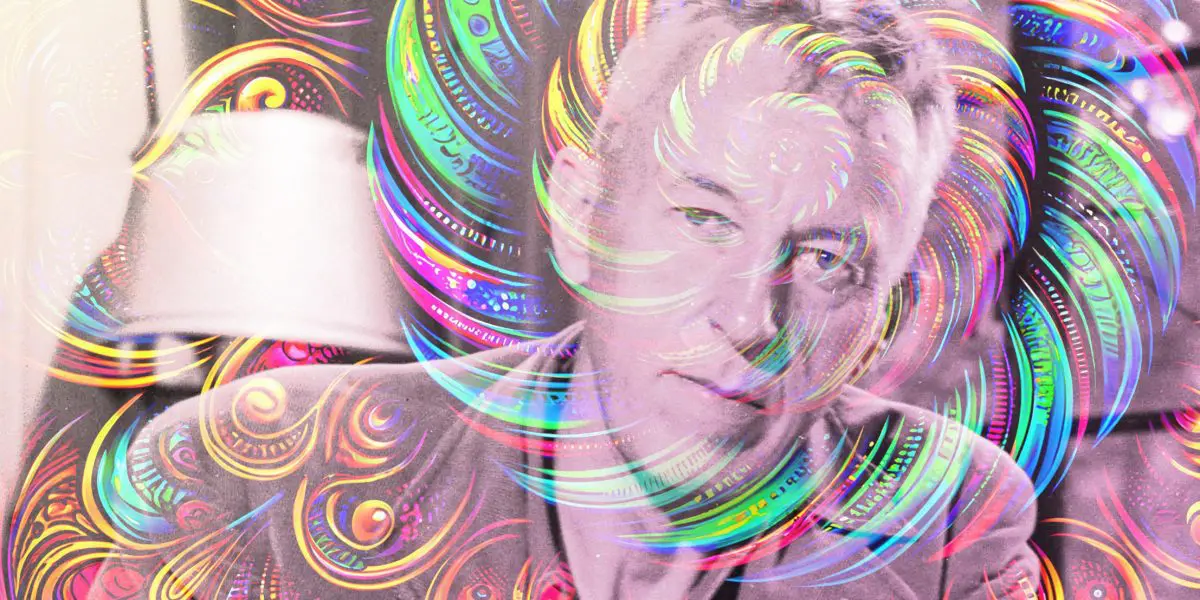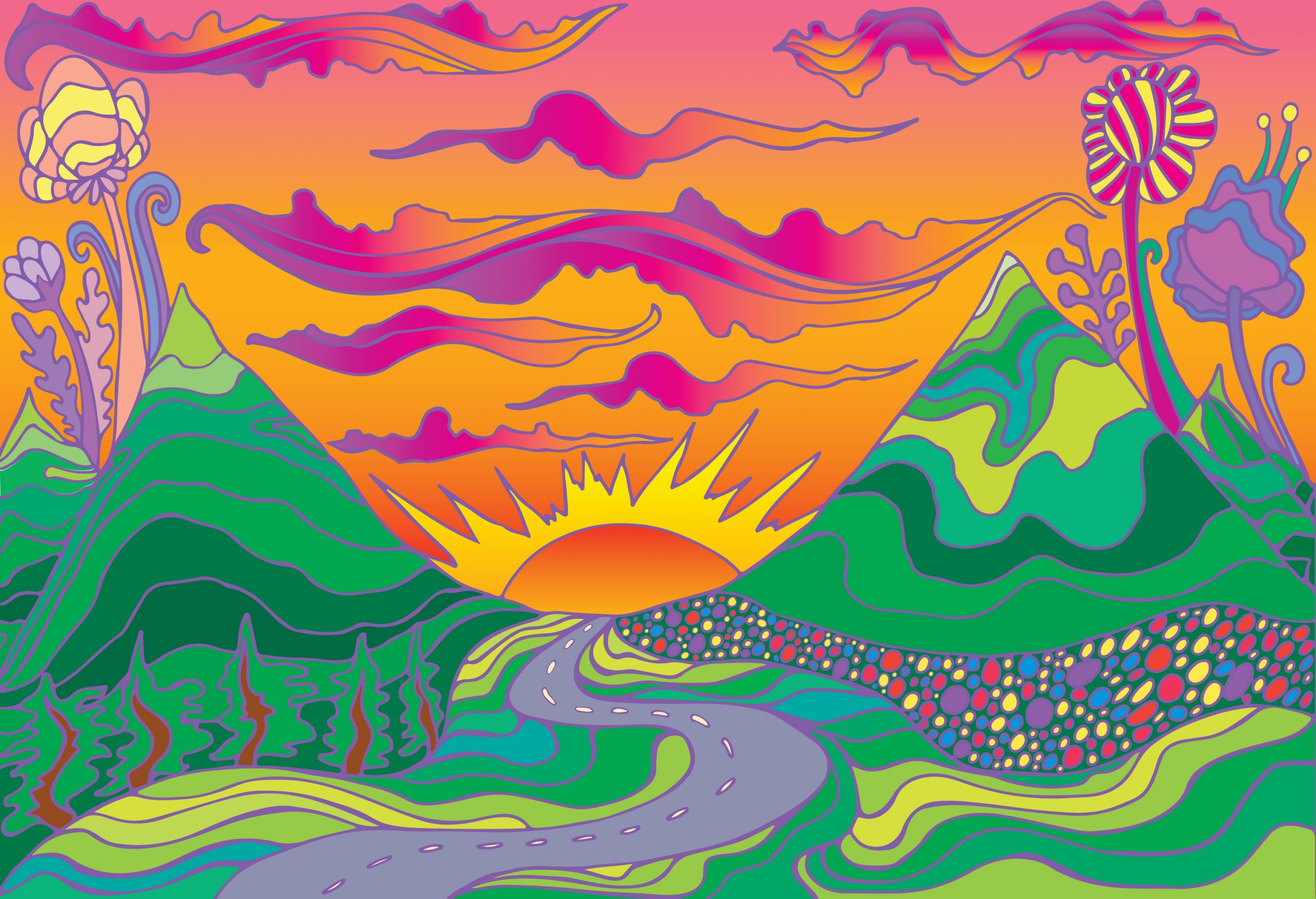
in this article
- Introduction
- Dispelling the Misconception About Wilson’s Path to Sobriety
- How a Belladonna Experience Helped Wilson Beat Alcoholism
- Wilson’s Support for LSD as a Treatment for Alcoholism
Are you 18 or older?
Please confirm that your are 18 years of age or older.
You are not allowed to access the page.

Disclaimer: The views and opinions expressed in this article are those of the authors and do not necessarily reflect the official policy or position of the Chemical Collective or any associated parties.
Many members of Alcoholics Anonymous (AA) may not be aware that the organisation’s founder, Bill Wilson, was an advocate of LSD. This may seem like a strange fact, given that for AA members, achieving ‘sobriety’ tends to mean total abstinence not just from alcohol but all mind-altering substances.
However, Wilson – based on his own experience with LSD – would come to promote the psychedelic experience as a method for achieving abstinence from alcohol. For him, there was nothing wrong or hypocritical about using one drug (to induce a certain kind of experience) to give up a harmful addiction to alcohol.
Yet there is a misconception in the psychedelic community that Wilson, who struggled with alcoholism, achieved sobriety by having a psychedelic experience. I want to use this article as an opportunity to clear up this confusion, as well as describe the true psychedelic aspect of Wilson’s life.

The idea that Wilson gave up alcohol after using a psychedelic was conveyed in Michael Pollan’s Netflix documentary (bearing the same title as his bestselling book) How to Change Your Mind. He claims:
I don’t think people realise Bill Wilson, co-founder of Alcoholics Anonymous, he was administered a psychedelic and that’s how he got sober. He had a spiritual experience that transformed his thinking about his addiction.
Professor David Nutt repeats this claim in an article in The Standard:
In 1933, the founder of AA, Bill Wilson, achieved his abstinence as a result of a psychedelic experience, and when LSD was made available for research in the Fifties, he helped persuade the US government to fund six trials in alcoholism.
But this isn’t quite true. Wilson did not take a psychedelic or have a psychedelic experience per se. He was actually given belladonna, which is a deliriant (not a psychedelic). And this experience occurred before LSD was even invented.

In 1934, Wilson was staying (for the fourth and final time) at a private New York City hospital (the Charles B. Towns Hospital), which treated people who were struggling with drug and alcohol addiction. This hospital employed something called the Towns-Lambert Cure to treat alcoholic clients. Many of these patients, including Wilson, used to be successful businessmen, but their drinking had spun out of control during the Great Depression. He was admitted there to recover from a bout of drinking. He showed signs of delirium tremens (a rapid onset of confusion caused by alcohol withdrawal, with symptoms including shaking, shivering, irregular heart rate, sweating, and sometimes hallucinations).
In December, during his hospital stay, he was given an extract of belladonna (Atropa belladonna), also known as deadly nightshade, which is a toxic perennial plant belonging to the nightshade family Solanaceae. The toxins it contains include atropine, scopolamine, and hyoscyamine, which cause delirium and hallucinations. The main psychoactive ingredient is scopolamine (also known as hyoscine, or ‘devil’s breath’), which can medically be used to treat motion sickness, nausea, and vomiting. It has also been researched and promoted as an effective ‘truth serum’.
Along with belladonna, he was given henbane (Hysocyamus niger), another poisonous plant belonging to the nightshade family Solanaceae. This also contains the tropane alkaloids hyoscyamine and scopolamine. Historically, henbane was used in combination with other plants – such as mandrake, belladonna, and datura (another deliriant) – to create psychoactive ‘magic brews’. These altered states of consciousness included visual hallucinations and a sensation of flight. It was originally used in continental Europe, Asia, and the Arab world, and there were reports in Europe that necromancers used it to invoke the souls of the dead as well as demons. By the Late Middle Ages, it was demonised, in light of its associations with witchcraft and sorcery.
While belladonna and henbane can cause hallucinations, as psychedelics can, these are commonly described as very unpleasant. And although both drugs alter consciousness more generally, they are classed as deliriants since they tend to cause confusion in the user. They do not belong to any of the classes of psychedelic chemicals: tryptamines, phenethylamines, ergolines. They are also not considered non-classic psychedelics like the dissociatives salvia (Salvia divinorum), nitrous oxide, and ketamine.
After taking belladonna and henbane, Wilson had a spiritual experience. Of course, this may also seem like a classic effect of psychedelics, but deliriants (and other non-psychedelic drugs, for that matter) can induce experiences of a spiritual nature. In his own words: “Suddenly, my room blazed with an indescribably white light. I was seized with an ecstasy beyond description.” He later described his vision at Towns Hospital as follows:
In the mind’s eye, there was a mountain. I stood upon its summit where a great wind blew. A wind, not of air, but of spirit. In great, clean strength it blew right through me. Then came the blazing thought, ‘You are a free man.’
Following this ‘white light’ spiritual experience – this profound experience of ecstasy and serenity – he gave up drinking for good. He didn’t touch alcohol again for the rest of his life. When he described his experience to the medical doctor William Duncan Silkworth (the director of the Towns Hospital and fellow co-founder of AA). Silkworth told him, “Something has happened to you I don’t understand. But you had better hang on to it.”
It is perhaps understandable to see why this deliriant concoction has been confused with a psychedelic, given the spiritual and transformative experience that Wilson described. The fact that he took deliriants to achieve these alterations in consciousness and life changes is perhaps less glamorous than the misconception that it was a psychedelic. But this goes to show that even toxins – which have unpleasant (and sometimes dangerous) effects – may profoundly change people’s lives for the better. Writer and journalist Don Lattin argues:
In my view, it doesn’t really matter if Bill’s vision was caused by psychoactive plants, divine revelation, or the hallucinations hardcore drunks sometimes experience when they hit bottom and stop drinking. What matters is that the vision transformed his life and inspired a crusade to free other alcoholics from addiction.

One of the foundations of the 12-step recovery programme that Wilson and company devised in the 1930s was the idea that alcoholics and other addicts must experience a “spiritual awakening”. This was to inspire them to “turn our will and our lives over to the care of God as we understand Him.” (Those were the only words in the 12 steps printed in italics, indicating that in the early AA circles, God could be found in all manner of places: the Judeo-Christian tradition, Eastern spirituality, or – 20 years later – in a tab of acid.)
On 29 August 1956, Wilson took LSD for the first time (when the drug was still legal), under the medical supervision of UCLA researcher Sidney Cohen, and with the spiritual guidance of the philosopher Gerald Heard (who was a friend of Wilson). In 1957, he wrote a letter to Heard, saying, “I am certain that the LSD experiment has helped me very much. I find myself with a heightened colour perception and an appreciation of beauty almost destroyed by my years of depression.”
Wilson later wrote to Carl Jung, in 1961, further praising the results of the experiment. He said the LSD session allowed him to re-experience the spiritual experience he had 25 years before with the deliriants, and it did so “with wonderful splendor and conviction,” he said. In the letter, he also noted, “Some of my AA friends and I have taken the material (LSD) frequently and with much benefit,” adding that the psychedelic sparks “a great broadening and deepening and heightening of consciousness.”
Wilson felt the LSD experience helped him eliminate many barriers erected by the ego, which stand in the way of one’s direct experience of God and the cosmos. He thought LSD could make a big difference to alcoholics who were suffering, if it were used regularly in a carefully controlled, structured setting. He stated:
It is a generally acknowledged fact in spiritual development that ego reduction makes the influx of God’s grace possible. If, therefore, under LSD we can have a temporary reduction, so that we can better see what we are and where we are going – well, that might be of some help. The goal might become clearer. So I consider LSD to be of some value to some people, and practically no damage to anyone. It will never take the place of any of the existing means by which we can reduce the ego, and keep it reduced.
It is important to underscore, however, that most people in AA were strongly opposed to his experimenting with a mind-altering drug. And it is true that this would likely be a majority opinion among AA members today. Nevertheless, many addicts and alcoholics have also found that psychedelics offered therapeutic benefits (including cessation of addiction), and numerous studies have validated this effect. This therefore throws into question whether opposition to drug use – no matter what the substance or context is – makes sense for all AA members. For some, absolute sobriety can be the best path forward, whereas for others, psychedelic-assisted therapy may be a highly effective way for them to achieve long-term abstinence from alcohol.
Sam Woolfe | Community Blogger at Chemical Collective | www.samwoolfe.com
Sam is one of our community bloggers here at Chemical Collective. If you’re interested in joining our blogging team and getting paid to write about subjects you’re passionate about, please reach out to David via email at blog@chemical-collective.com

Welcome to Chemical Collective.
Create an account to earn 200 welcome points.
Already have an account? Sign in


Check out our Community Blog and get involved with the conversation. You will be awarded 50 x ChemCoins for each comment up to a limit of 250 total ChemCoins.


Have you purchased any of our products? Reviews and reports are so important to the community. Share your honest opinion, and we’ll reward you with 50 ChemCoins for each review!


Every time you complete an order with us, you’ll be awarded ChemCoins for each Euro spent.
Welcome to Chemical Collective.
Create an account to earn 200 welcome points.
Already have an account? Sign in

Earn commission every time someone makes a purchase through your link.
When you become an affiliate, you will be allocated a unique link to share with your friends, followers, subscribers, or Aunt Susan.
You can choose to payout the commission earned once per month, or save it up to receive on a rainy day! Commission earned is 5% of the total order value per referral.
Contact us to join the Chemical Collective family and become an affiliate.
share your toughts
Join the Conversation.
Sometimes escaping becomes their reality